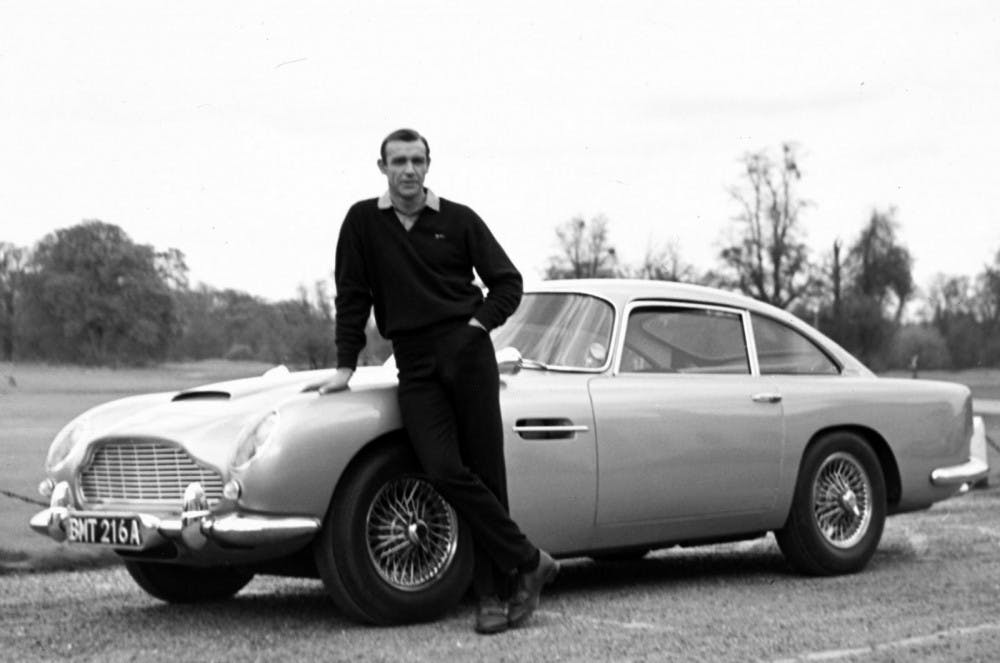Fifty years ago, when Sean Connery’s Agent 007 first graced the screen in Dr. No, few viewers sensed that this campy little spy movie would change the landscape of film for decades to come.
Martinis, tuxedos and Aston Martins took on a new meaning in 1962, and even now, expressions like “shaken, not stirred” are firmly ingrained in our cultural vocabulary. For every generation Bond has stood as the ideal man, evolving to fit with the times but never sacrificing his trademark class or his ladykiller status. With last weekend’s release of the franchise’s terrific 23rd entry, Skyfall, it’s worth remembering that the more things change, the more they stay the same, even in the universe of Agent 007.
For the past five decades, even as the cinematic world has gone through transformation after transformation, the James Bond film formula has remained intact. Each movie opens with a miniature action setpiece, only to transition into a montage of nude female bodies set to a rock or pop ballad, which then gives way to a sprawling narrative riddled with exotic locations, gorgeous women, larger-than-life villains, snazzy cars and balls-to-the-wall choreographed violence. Some directors and writers have sought to tinker with this formula, but if Quantum of Solace and Skyfall are any indication, the basic structure is here to stay.
Moreover, a few ingredients have appeared in the mix of virtually every Bond movie to date. Chief among these is the Bond girl. In 1962, when Ursula Andress emerged from the ocean in a then-scandalous bikini as the ever-so-subtly named Honey Rider, she sent shockwaves through the world — or at least through the world of 12-year-old boys and their fathers. With her flawless looks, skimpy clothing and inability to resist the charms of a decidedly less attractive man, Rider became the quintessential Bond girl, followed but never surpassed by such iconic femmes as Pussy Galore, Holly Goodhead and Octopussy, among countless others, all of whom seem to have been named by horny high school freshmen.
In the Bond universe, women are either evil dominatrices (a la Thunderball’s Fiona Volpe) or dopey damsels in distress (From Russia With Love’s Tatiana), but even the former type can never seem to turn away from James’ aggressive advances. Whether he’s slapping them on the rear or twisting their arms, they eat out of his hand in a way that would make all but the Don Drapers and Todd Akins of the world cringe.
That said, as the series progresses, the films’ female portrayals become less and less problematic; 1977’s The Spy Who Loved Me, 1997’s Tomorrow Never Dies, and 2002’s Die Another find Bond working side by side with female operatives who are in every way his equals, and 1995’s GoldenEye flips the usual 007 paradigm on its head with Xenia Onatopp (Famke Janssen), a nymphomaniac who earns her surname when her skills in the sack threaten Bond’s life.
More than merely a “Bond girl,” Onatopp belongs on any list of the franchise’s most vicious villains. The crown for the vicious-villain category goes to Ernst Stavro Blofeld, the bald, kitty-cat-carrying mastermind who appears in an unprecedented six Bond movies and makes a nasty impression in all of them. Parodied on countless occasions, most famously in the Austin Powers series, Blofeld stands as the ultimate Bond baddie; he’s ruthless, larger-than-life, and ridiculously over-the-top.
His tendency to conveniently get plastic surgery with near-impossible frequency makes him ideal for casting purposes. More recent villains such as License to Kill’s Sanchez and Casino Royale’s Le Chiffre are more realistic, but none of them rise to the psychotic grandeur of Blofeld.
Even with a truly vile villain and an exceptionally pretty Bond girl or two, a Bond movie will falter if it doesn’t capitalize on the franchise’s other key elements. A 007 film’s opening song, for instance, can set a tone of high-octane thrills, as the Wings’ titular tune does for 1973’s Live and Let Die, or it can put the audience to sleep and induce cringes, as does Sheryl Crow’s screechy rendition of “Tomorrow Never Dies.”
Along the same lines, though Bond’s array of gadgets can make for intense action sequences and campy fun, they can also turn otherwise decent films such as Die Another Day into outstandingly stupid spectacles.
At times, the Bond franchise has descended into the realm of all-out silliness and moronic plotlines and characters, but Skyfall, perhaps the series’ best film yet, indicates that 007 movies will be alive and well for years to come — so long as they continue to change with the times without losing their heart, soul and fancy cars.







